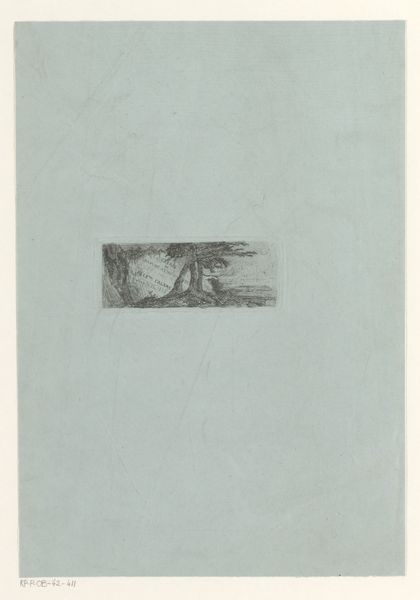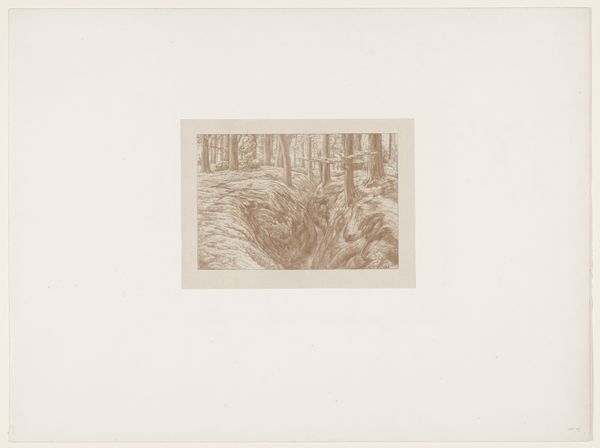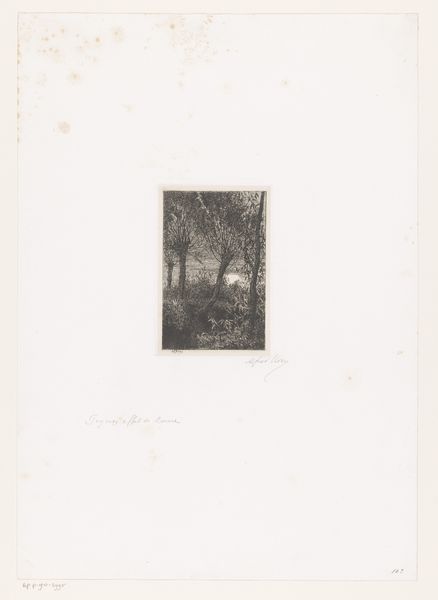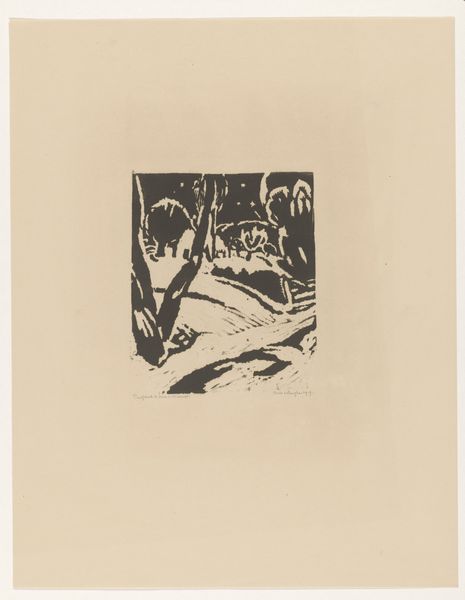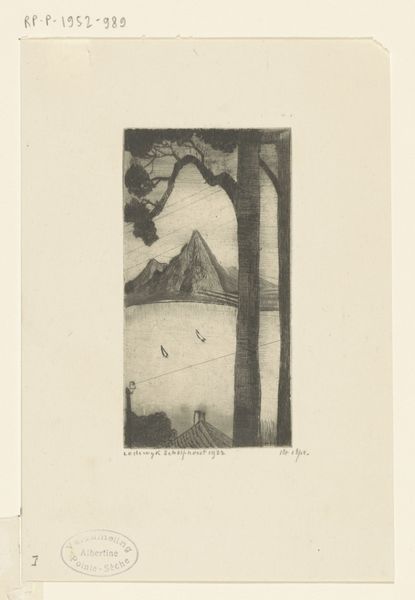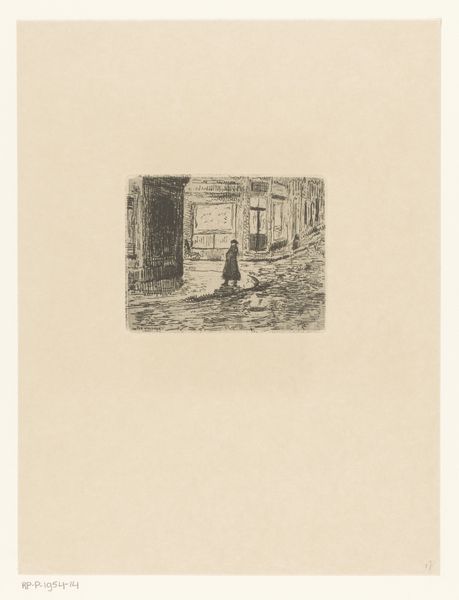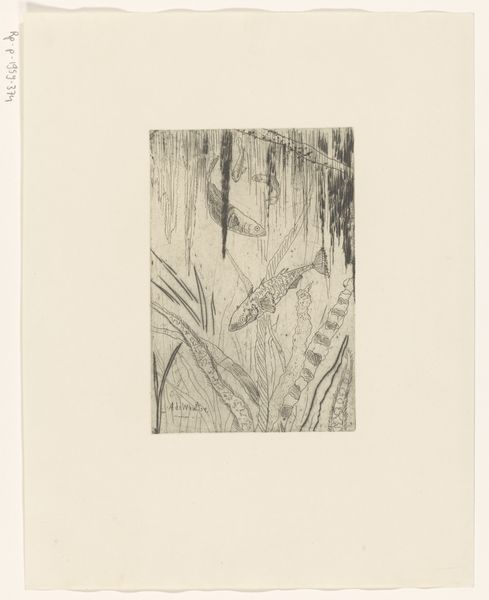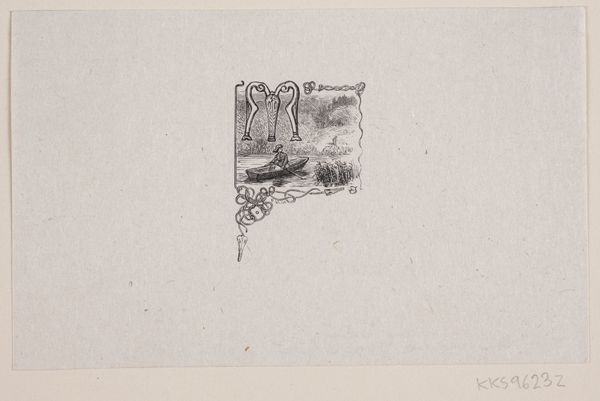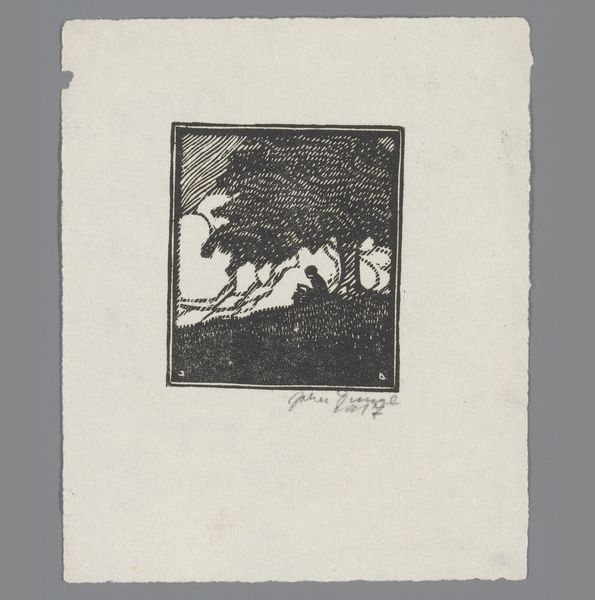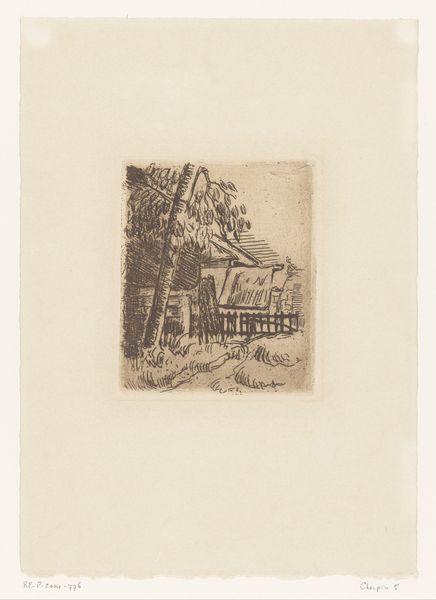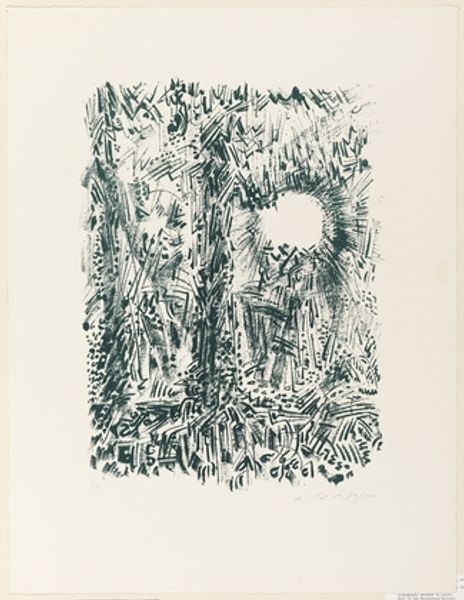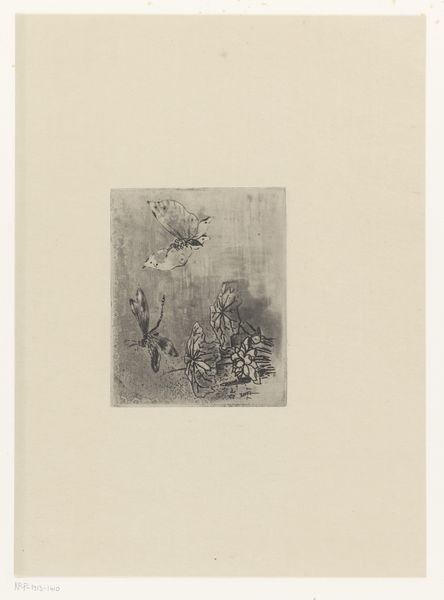
drawing, paper, ink
#
drawing
#
art-nouveau
#
landscape
#
figuration
#
paper
#
historical fashion
#
ink
#
forest
#
ink colored
#
line
#
symbolism
Dimensions: height 413 mm, width 295 mm
Copyright: Rijks Museum: Open Domain
Curator: Antoon Derkinderen's drawing, "Vrouw in een bos bij nacht," which translates to "Woman in a Forest at Night," produced sometime between 1869 and 1915, immediately strikes one with its rather stark verticality. The artist used ink on paper to illustrate this evocative night scene. What are your initial thoughts on this drawing, presented as this small window to a nocturnal scene? Art Historian: The first thing that jumps out at me is this dreamlike quality – the compressed space, the simplified forms; it feels very much like a glimpse into a myth, or a carefully constructed cultural fantasy about women and nature. It's all cool tones and ethereal suggestions, presenting an image that's heavy with symbolic weight. Curator: Yes, I think that’s apt. Let's consider how Derkinderen orchestrates this "weight". Notice the repetition of vertical lines of the trees, balanced by the curve of the crescent moon, which draws the eye upward, contrasting with the figure situated in the lower-left quadrant. How might the visual language serve to deepen our cultural understanding, as you put it? Art Historian: Well, this period was deeply engaged in crafting national identities and archetypes. The solitary woman in the woods connects to long-standing traditions surrounding nature, femininity, and the unconscious, offering an escape into an idealized space apart from urban, industrial life. We need to recognize that there is constructed visual and political rhetoric at play. What does a solitary female figure represent in relation to society during this time? Is she escaping society or becoming closer to herself? Curator: Intriguing questions. From a formal perspective, the framing of the central image enhances the piece's introspective quality, almost as if we’re glimpsing a private, internal world, rendered in tones that deliberately create a subdued mood. Derkinderen employed simplification of form rather than realistic imitation, which in itself has great political charge considering that the establishment promoted traditional modes of making. It appears that it functions much like the aesthetic manifestos produced in that period by lesser-known artists. Art Historian: And thinking about the Art Nouveau influence, doesn’t that decorative border itself imply a preciousness or containment? As if this vision of nature is something rare, something set apart and deliberately crafted for consumption. Curator: Precisely, almost like a memory meticulously preserved in the formal elements. I must admit, reflecting on this drawing in these terms has made me see it anew. Art Historian: And for me, it reaffirms the significance of understanding how art reflects and shapes the cultural narratives of its time. There are volumes to unpack here regarding representation and historical narrative.
Comments
No comments
Be the first to comment and join the conversation on the ultimate creative platform.
